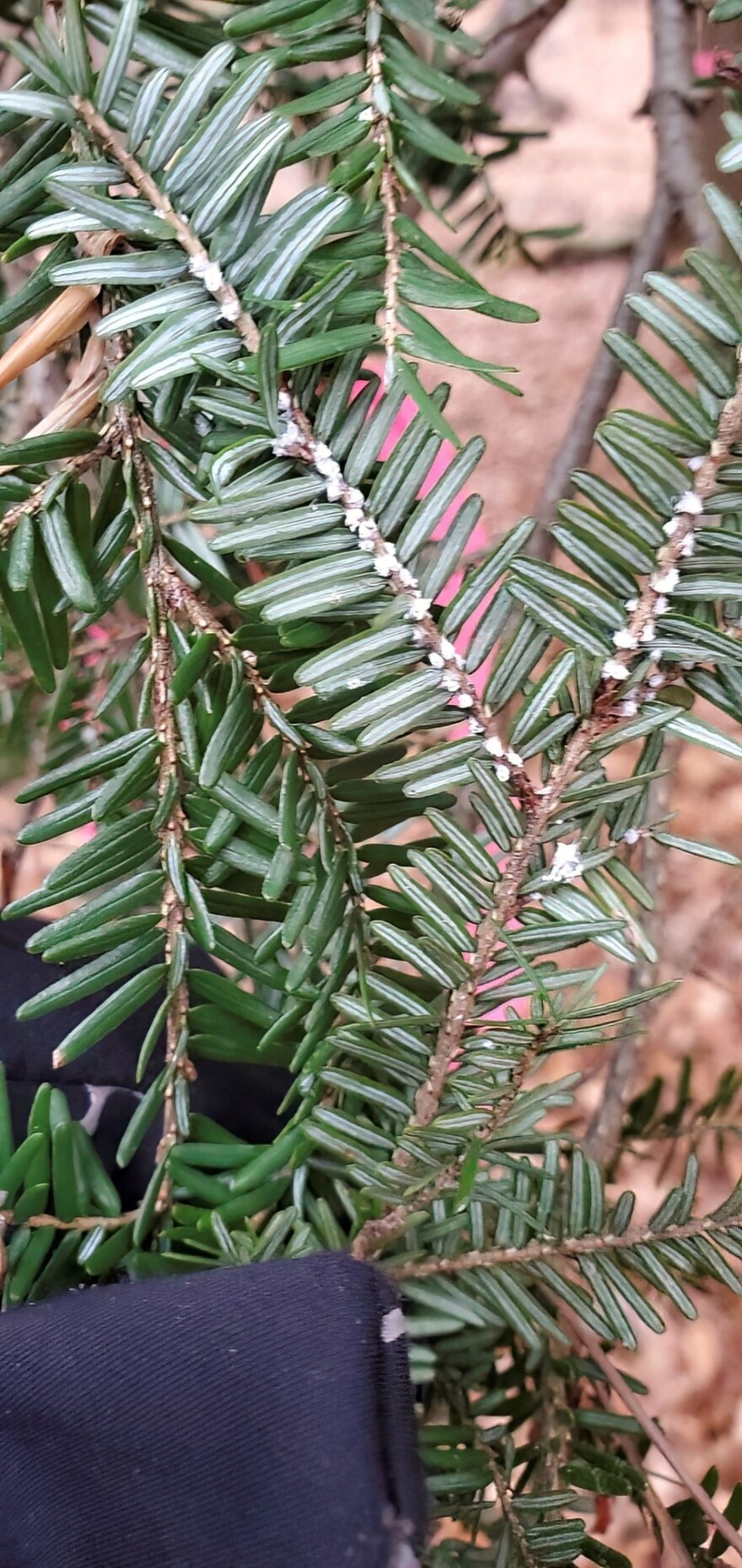Hemlock woolly adelgids suck the sap out of Michigan’s eastern hemlock trees.
“And over time, say four to ten years, they can actually kill the trees,” said Joanne Foreman, Invasive Species Communications Coordinator with the Michigan Department of Natural Resources.
The bugs are really small, but you can spot evidence of them and wintertime is a good time to look.

“Right now, the woolly adelgids are working at sucking sap out of the hemlock trees. And while they’re doing so, they’re spinning these little white cottony threads that turn into small white balls that you can see on the underside of hemlock branches,” Foreman explained.
How do you tell a hemlock from other evergreen trees?
“The needles on hemlock branches come out from the sides. So, it’s kind of a flat looking branch where the needles come out,” Foreman said.
Thousands of eastern hemlock trees in five western Michigan counties have been treated to get rid of the pest. Those counties are Allegan, Ottawa, Muskegon, Oceana, and Mason. Most of the infested eastern hemlock have been within forests about five miles from Lake Michigan, but Foreman said the hemlocks are also grown in some yards.
Property owners are encouraged to inspect their eastern hemlock trees even if they don’t live in one of the known infested counties.
If you see signs of infestation, you’re asked to note the location and notify the Michigan State University based Midwest Invasive Species Information Network online.





